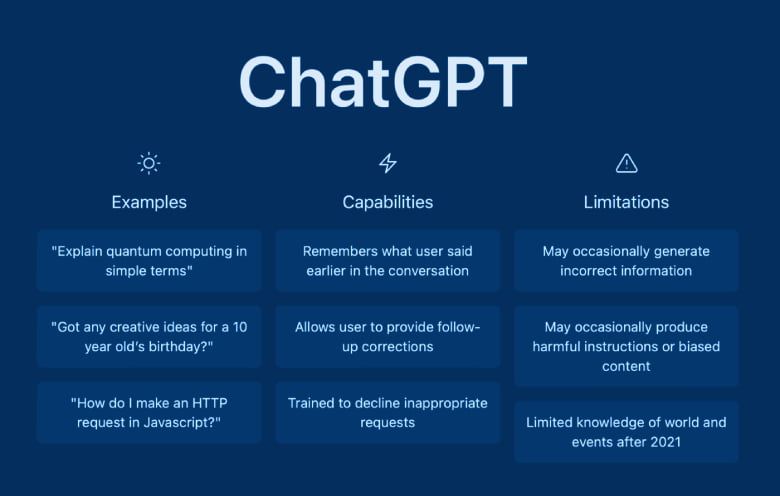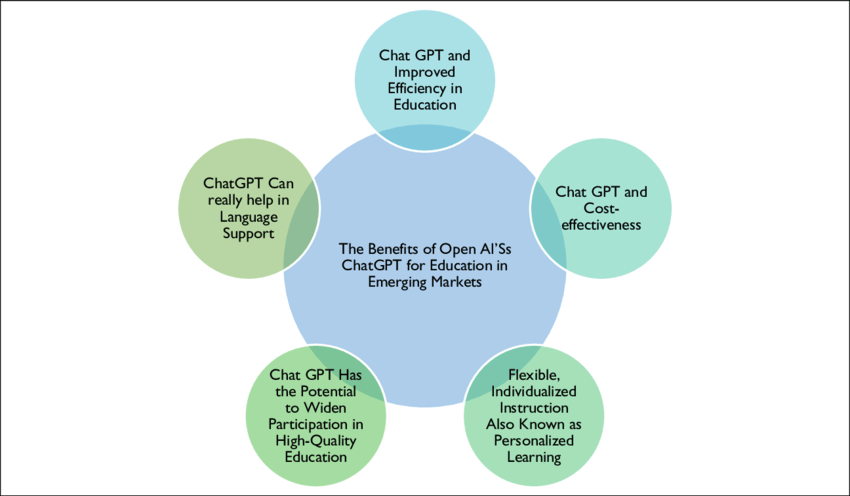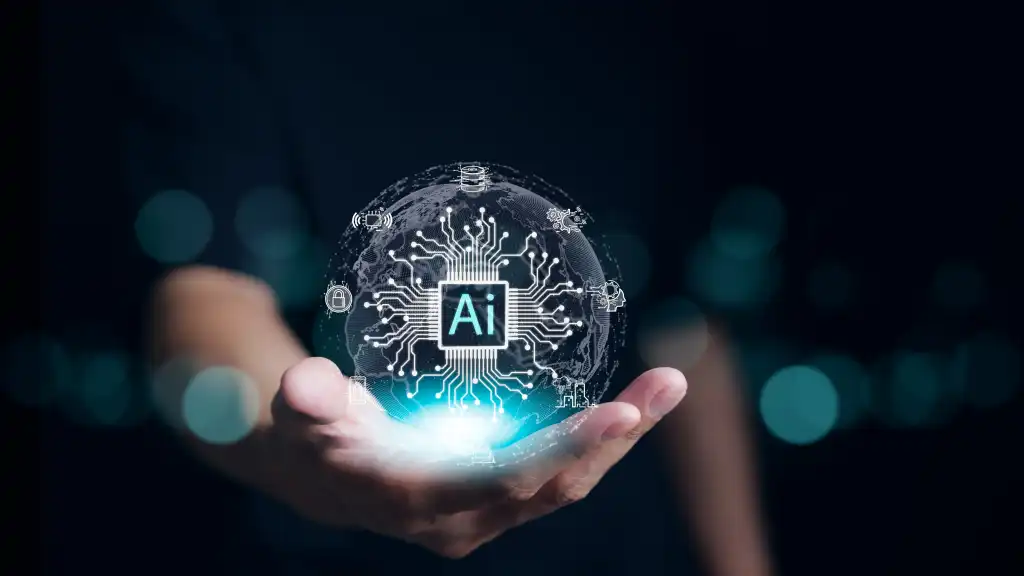OpenAI recently announced a change to how users can interact with its large language model (LLM), ChatGPT. Users can now access and interact with the artificial intelligence (AI) without needing to create an account. This move aligns with OpenAI’s stated goal of making its AI tools more widely available.
“Starting today, you can use ChatGPT instantly, without needing to sign-up. We’re rolling this out gradually, with the aim to make AI accessible to anyone curious about its capabilities,” OpenAI posted on its blog on April 1.
Previously, accessing the free tier of ChatGPT required users to have an OpenAI account.
It’s noteworthy that OpenAI’s move positions ChatGPT as the only major AI chatbot offering access without the need for account creation. Competitors such as Google Gemini, Microsoft’s (NASDAQ: MSFT) Copilot, Anthropic‘s Claude, and Grok by xAI all require account creation for user interaction.
Table of Contents
What is UX?
UX stands for User Experience. It refers to a person’s overall experience when interacting with a product, service, or system. This includes everything from how easy it is to use something to how enjoyable it is to interact with.
Here are some key aspects of UX:
- Usability: Can users easily find what they need and complete tasks? Is the interface clear and intuitive?
- Accessibility: Can people with disabilities use the product or service?
- Information Architecture: Is the information organized in a logical way that users can understand?
- Interaction Design: How do users interact with the product? Is it smooth and efficient?
- Visual Design: Is the product aesthetically pleasing and engaging?
Why is UX Important?
Good UX is essential for the success of any product or service. When users have a positive UX, they are more likely to be satisfied, loyal, and recommend the product to others. Here are some benefits of good UX:
- Increased User Satisfaction: When a product is easy to use and enjoyable to interact with, users are more likely to be satisfied.
- Improved Brand Loyalty: Happy users are more likely to become loyal customers.
- Increased Sales and Conversions: A good UX can lead to increased sales and conversions, as users are more likely to complete their desired actions.
- Reduced Support Costs: A well-designed product requires less customer support.
UX Design Process
UX design is an iterative process that involves understanding user needs, designing solutions, testing those solutions, and iterating based on feedback. Here are some common steps in the UX design process:
- User Research: Understanding user needs and goals through interviews, surveys, and usability testing.
- Information Architecture: Organizing content in a logical way that users can understand.
- Wireframing and Prototyping: Creating low-fidelity and high-fidelity mockups of the interface.
- Usability Testing: Testing the design with real users to identify areas for improvement.
- Iteration: Refining the design based on feedback from user testing.
UX encompasses a wide range of skills and disciplines, including:
- User research
- Interaction design
- Information architecture
- Visual design
- Usability testing
By focusing on user experience, businesses can create products and services that are not only functional but also enjoyable to use.
What is ChatGPT?
ChatGPT is an AI chatbot with natural language processing (NLP) that allows you to have human-like conversations to complete various tasks. The generative AI tool can answer questions and assist you with composing emails, essays, code, and much more.
It’s currently open to use for free. OpenAI launched a paid subscription version called ChatGPT Plus in February 2023, which guarantees users access to the company’s latest models and updates.

What is ChatGPT used for?
ChatGPT offers many functions in addition to answering simple questions. ChatGPT can compose essays, have philosophical conversations, do math, and even code for you.
The tasks ChatGPT can help with also don’t have to be so ambitious. For example, my favorite use of ChatGPT is for help creating basic lists for chores, such as packing and grocery shopping, and to-do lists that make my daily life more productive. The possibilities are endless.
ZDNET has published many ChatGPT how-to guides. Below are some of the most popular ones.
Use ChatGPT to:
- Write an essay
- Create an app
- Write code
- Build your resume
- Write Excel formulas
- Summarize content
- Write a cover letter
- Start an Etsy business
- Create charts and tables
- Write Arduino drivers
- Browse the web
Can ChatGPT help me apply for jobs?
Yes, ChatGPT is a great resource to help with job applications. Undertaking a job search can be tedious and difficult, and ChatGPT can help you lighten the load. ChatGPT can build your resume and write a cover letter.
If your application has any written supplements, you can use ChatGPT to help you write those essays or personal statements.
Benefits and limitations of ChatGPT no-signup access
While increasing accessibility, the no-signup option presents potential limitations worth considering.
By creating a free OpenAI account, users unlock access to ChatGPT on various platforms, including web browsers and mobile apps. Moreover, accounts empower users to review past chat history and potentially share conversations.
For those seeking the most advanced ChatGPT features, OpenAI offers a paid subscription tier called “ChatGPT Plus,” priced at $20 per month.
This tier utilizes a more advanced architecture (GPT-4) and offers features like image generation and voice control, which are unavailable in the free tier.
In fact, in previous articles, Finbold explained how ChatGPT can make trading strategies easier and how to turn screenshots into code, demonstrating the model’s potential for various tasks.

OpenAI’s focus on responsible AI development
In emphasizing its commitment to responsible AI development, OpenAI has implemented additional content safeguards in this no-signup experience.
These safeguards aim to block prompts and generated responses falling within sensitive categories.
Furthermore, users retain control over their data, with the option to disable data collection from their interactions with ChatGPT, regardless of whether they have an account or not.

OpenAI is a prominent research organization with a strong focus on responsible AI development. Here are some key aspects of their approach:
- Safety Principles: OpenAI prioritizes safety in AI development. They have established principles including building safety into their tools, working to reduce potential harms, collaborating with stakeholders, and continuously observing and analyzing how their models behave.
- Transparency: OpenAI recognizes the importance of transparency in AI. They strive to be transparent about their research and development process, publishing research papers and code whenever possible.
- Collaboration: OpenAI actively collaborates with industry leaders and policymakers to ensure AI development is conducted responsibly. They believe in open dialogue and working together to navigate the challenges and opportunities of AI.
- Preparedness: OpenAI has dedicated teams focused on assessing the safety risks associated with their AI advancements. They prioritize halting development or deployment if safety measures fall short.
- Addressing Bias: OpenAI acknowledges the potential for bias in AI algorithms. They actively research and develop methods to mitigate bias in their models to ensure fair and responsible AI development
Wider AI access, continued considerations
OpenAI’s decision to remove the sign-up barrier for ChatGPT democratizes access to LLMs.
This allows a wider audience to experience the potential of AI for tasks like creative brainstorming or casual interaction.
However, it also prompts discussions about the responsible use of AI, particularly concerning safeguards against misuse.
The more AI technology continues to evolve, the more important it is to develop and use it responsibly.
Wider access to AI is a double-edged sword. While it democratizes this powerful technology and fosters innovation, there are important considerations to ensure responsible and beneficial use. Here’s a breakdown of both the positive and negative aspects of wider AI access:
Positive Impacts:
- Democratization of Innovation: Wider access allows smaller companies, startups, and individual researchers to leverage AI for their projects. This fosters innovation across various fields like medicine, materials science, and environmental solutions.
- Increased Efficiency and Productivity: AI can automate tasks, optimize processes, and improve decision-making, leading to greater efficiency and productivity across industries.
- Improved Accessibility: AI-powered tools can assist people with disabilities, offering new avenues for communication, learning, and participation in society.
Challenges and Considerations:
- Bias and Fairness: AI models can perpetuate existing biases in data sets they are trained on. Mitigating bias requires careful data selection, model development, and ongoing monitoring.
- Security Risks: Malicious actors could exploit AI for cyberattacks, disinformation campaigns, or autonomous weapon development. Robust security measures and responsible development practices are crucial.
- Job displacement: Automation through AI could lead to job losses in certain sectors. Governments and businesses need to prepare for and manage potential workforce transitions.
- Explainability and Transparency: As AI models become more complex, their decision-making processes can become opaque. Ensuring explainability and transparency is crucial for building trust and addressing potential biases.
- Accessibility Divide: Unequal access to computing resources, training data, and technical expertise could create a digital divide, further marginalizing those without access to advanced AI tools.
Moving Forward:
- Ethical Frameworks: Developing robust ethical frameworks for AI development and deployment is critical. This involves addressing issues like bias, privacy, and accountability.
- Education and Training: Widespread education and training programs are essential to equip users with the skills and knowledge to utilize AI responsibly and effectively.
- Regulation and Governance: Governments and international bodies might need to develop regulations and governance structures to ensure safe, ethical, and responsible AI development.
Wider AI access presents exciting opportunities, but careful consideration of the challenges is vital. By prioritizing responsible development, ethical frameworks, and equitable access, we can move forward with AI for the benefit of all.
Disclaimer ||
The Information provided on this website article does not constitute investment advice ,financial advice,trading advice,or any other sort of advice and you should not treat any of the website’s content as such.
Always do your own research! DYOR NFA
Coin Data Cap does not recommend that any cryptocurrency should be bought, sold or held by you, Do Conduct your own due diligence and consult your financial adviser before making any investment decisions!





Leave feedback about this